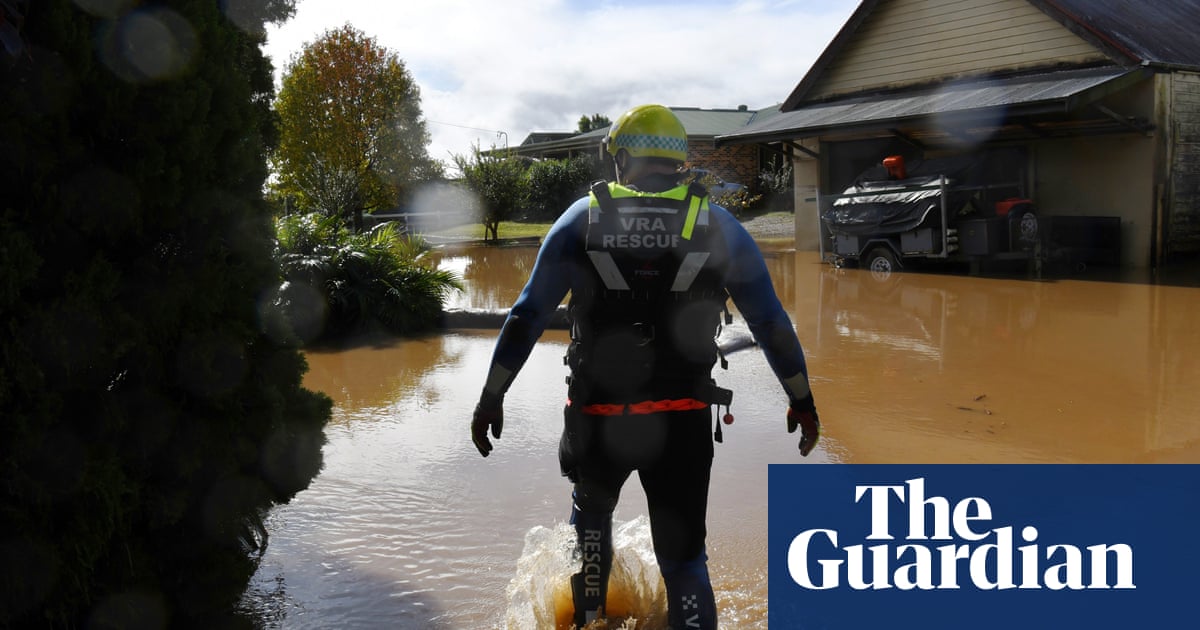Over 50,000 people remain isolated on the NSW mid-north coast with recovery efforts expected begin on Saturday after the heavy rainfall that has battered the region moved south out of the state.
The NSW State Emergency Service (SES) said on Friday that 50,000 people in 15 communities, including Kempsey and Taree, remain isolated by flood waters with 160 active warnings, 39 of which were at emergency warning and 76 at watch and act.
NSW SES assistant commissioner, Dean Storey, urged isolated residents to remain patient and follow the advice.
“If you are under evacuation warnings, please be patient, do not return home until you’re informed it is safe to do so, stay up to date with the latest information, and stay in safe locations,” he said.
There had been 736 flood rescues as of Friday afternoon, and Storey said as that number fell, the focus would turn to resupplying isolated communities via rescue boats and helicopters.
More than 2,400 personnel were assisting with rescue efforts, with assistance flowing in from Victoria, the ACT and Tasmania on Friday.
The Bureau of Meterology forecast the system would leave NSW late in the day on Friday, with rain expected to hit parts of Victoria and Tasmania on Saturday, but with less intensity than that experienced in NSW in the past few days.
However, strong and damaging wind gusts are forecast to strike in the flood-affected areas from Monday, a Bureau of Meteorology senior meteorologist, Angus Hines, said.
“The land is very wet, extremely saturated after this week’s rainfall … when you get strong winds on to soggy soil that is when trees can come down. There is a potential for tree damage, tree falls, power outages, damages to houses, properties and cars.”
There have been five confirmed deaths in the region during the flooding with two more deaths confirmed on Friday.
As the rain moved south across NSW on Friday, it brought heavy rain across large parts of Sydney with up to 200mm in rain in some areas, causing train delays anda warning visitors to the Sydney Vivid festival launch on Friday evening may experience delays.
On Friday evening, there was a severe weather warning for the South Coast and parts of Illawarra, Southern Tablelands and Snowy Mountains as the system moved toward the Victorian border.
The prime minister, Anthony Albanese, said disaster assistance would be extended to a further three local government areas – Armidale, Muswellbrook and Walcha – taking the total number of council areas eligible for assistance to 19.
Personal hardship assistance grants of $180 per individual or $900 per family will be available, along with $1m community recovery grants for affected local councils.
This assistance is separate to the disaster recovery allowance announced for the local government areas of Kempsey, Port Macquarie, Mid Coast and Dungog, which Albanese said would be available from 2pm on Monday.
Insurers have already received more than 1,600 claims relating to the severe flooding, with more expected to come through over the weekend, the Insurance Council of Australia’s chief executive, Andrew Hall said.
Insurers have had people stationed in communities where it is safe to do so, and more claims staff will be called in once teams can access flood affected areas. Hall told the ABC that since 2022, when there were 230,000 disaster insurance claims payouts, the industry now has staff on all year round.
“It’s no longer just a case that we have a workforce over the summer holiday period when we usually have these events,” he said. “We’re now seeing a disaster season really stretched throughout the year, and insurers have had to rebuild their workforces to be able to cope with that.”
Albanese said people facing difficulty obtaining insurance against extreme weather events represents a “real challenge” as the science says such events are becoming more frequent and intense.
“It is a challenge that we need to deal with and be conscious of, and we certainly are. And that’s why we’re engaged directly not just with the Insurance Council … but also individual insurance companies,” he said.
Hall said insurers have been attempting to rebuild their insurance pools since 2022, and the flood defences for towns that are hit every few years need to be improved. He said driving down inflation on building costs would also help reduce premium rises.
